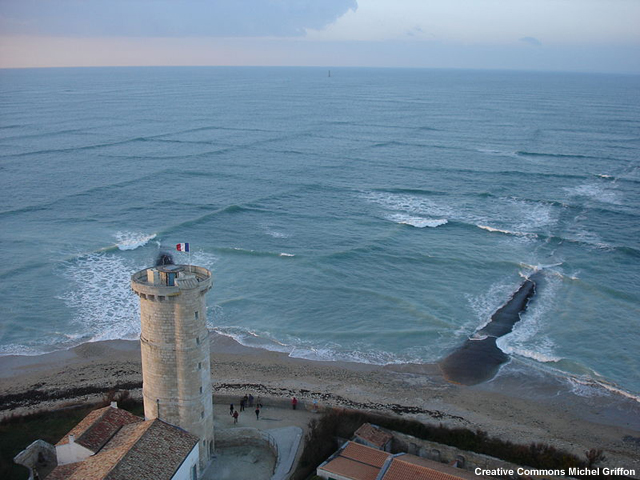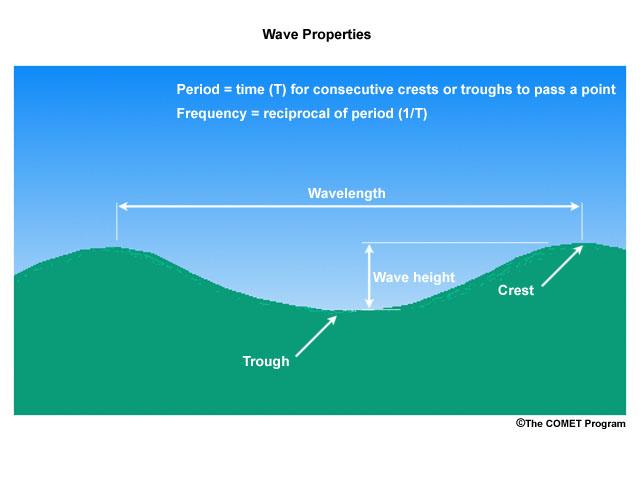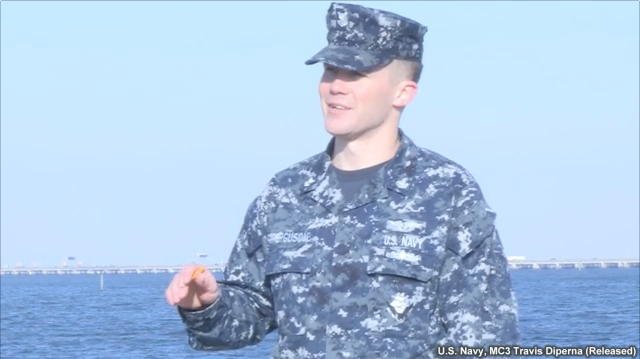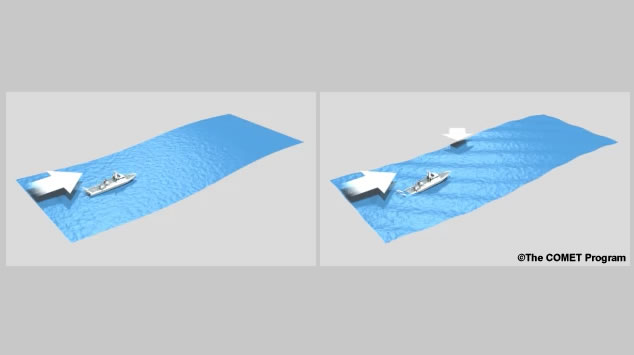Determining the Sea Condition
At 9:45 a.m., you head out to start your METAR by assessing the sea condition.
Sea condition and state, including wave heights, period, and other properties, are among the most difficult observations to make from a moving ship. Both wind and swell waves must be accounted for in your observation of the sea condition.
AG2 Ferguson: "Sea state is one of the most difficult jobs in observing. When you go to see the sea state, you need to go to the lowest part of the ship. When you get to the lowest part, you'll see waves. The shorter, smaller waves are wind waves. The big, longer waves are swell waves. When you observe these waves, you want to look out approximately 50 yards, or a distance that the waves are not impacted by the ship."
Wind waves are formed by the wind in the local area and will always have a direction that is the same as local winds.
Swell waves do not have local sources. They are due to winds blowing at a distance or winds that have ceased to blow. Swell waves depend on the fetch--the length or distance of water over which a particular wind has blown. Large basins tend have large fetches and swell waves can cover a greater distance. Swell waves typically have a much larger wavelength and longer period than wind waves.

Cross swell resulting from two wave systems generated by wind patterns at a 90-degree angle. Such conditions occur rarely, but set up a chaotic sea and dangerous conditions.
Because swell waves are generated from distant sources, sometimes a secondary swell system can be observed. These conditions occur only rarely, but can lead to interesting wave patterns.

For both wind waves and swell waves, there are five main properties you should observe:
- wave height—the vertical distance from the top of the wave (the crest) to the bottom of the wave (the trough), observed in feet
- significant wave height—the average height of the highest one-third of all waves, in feet
- period—the time interval for a single wave to pass by, measuring by timing successive wave crests as they pass a fixed point, in seconds
- frequency—the number of waves passing a given point in one second (the reciprocal of the period)
- wavelength—the horizontal distance between the same point on two waves (for example, crest to crest or trough to trough)



